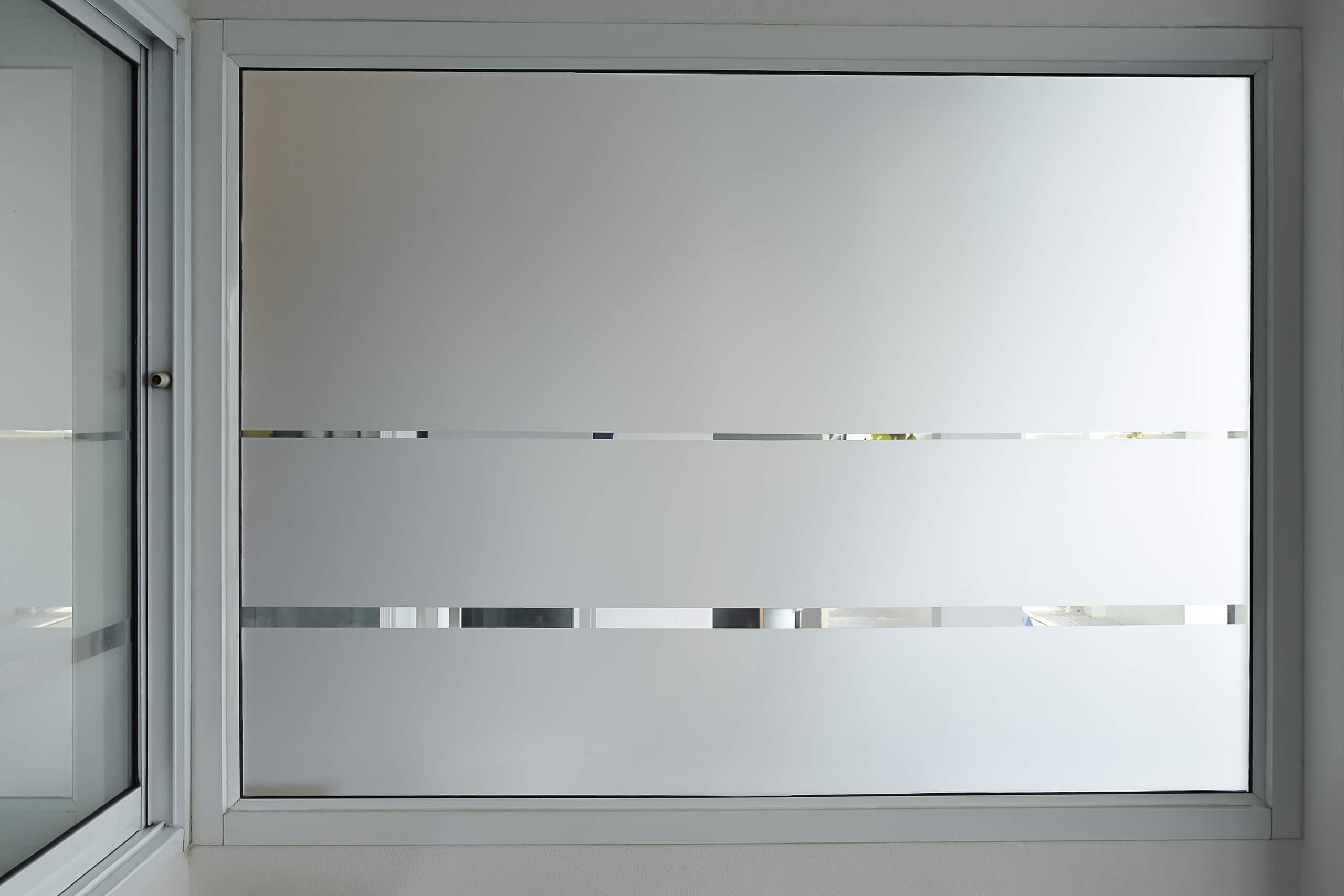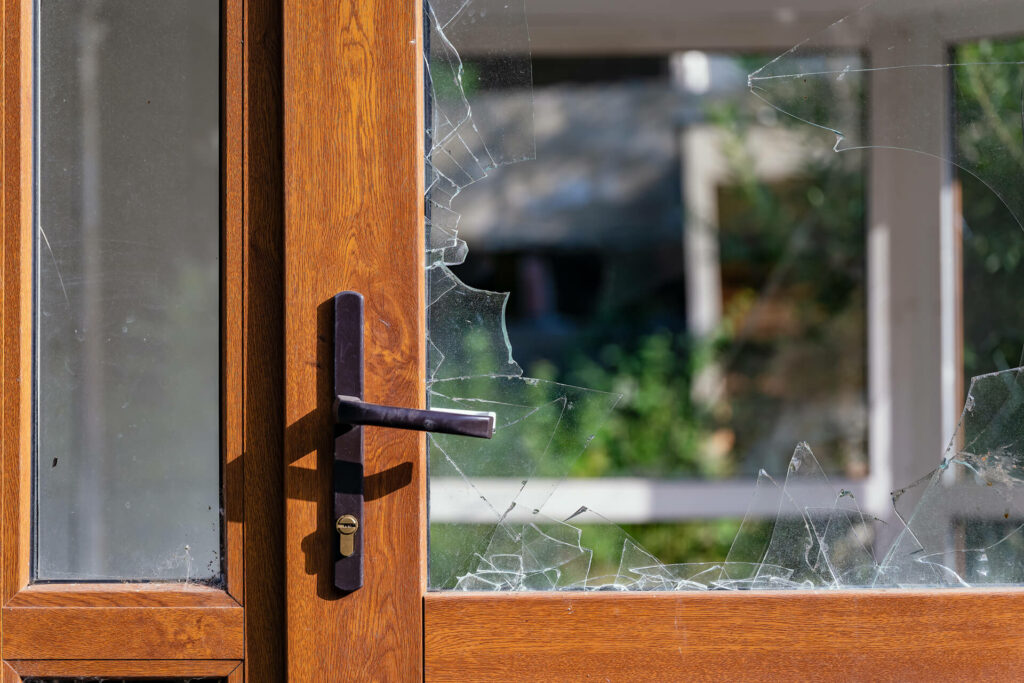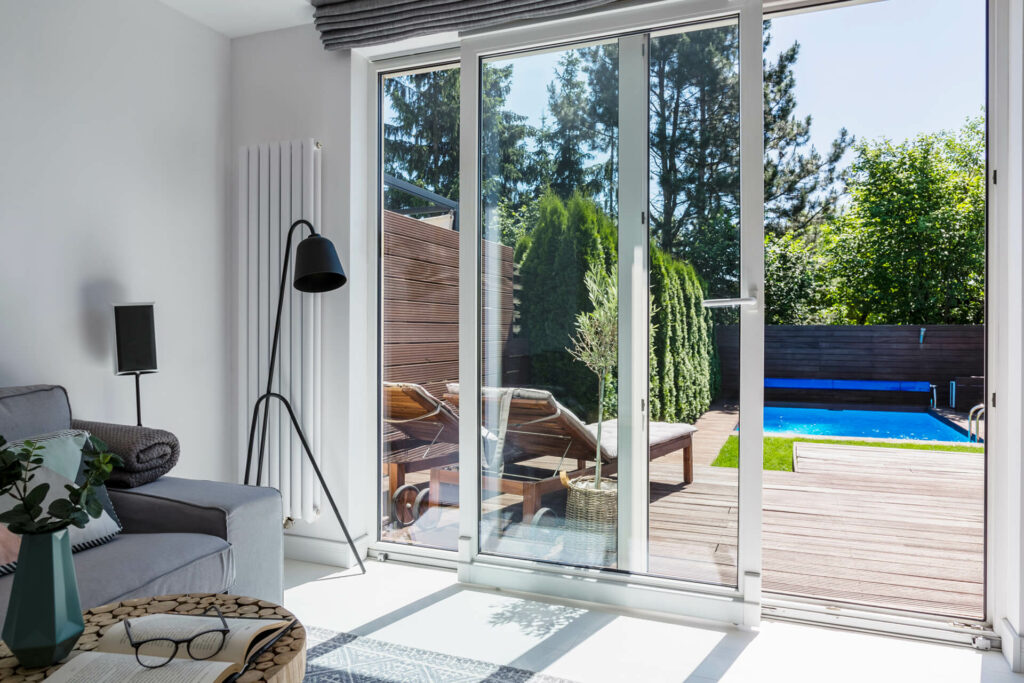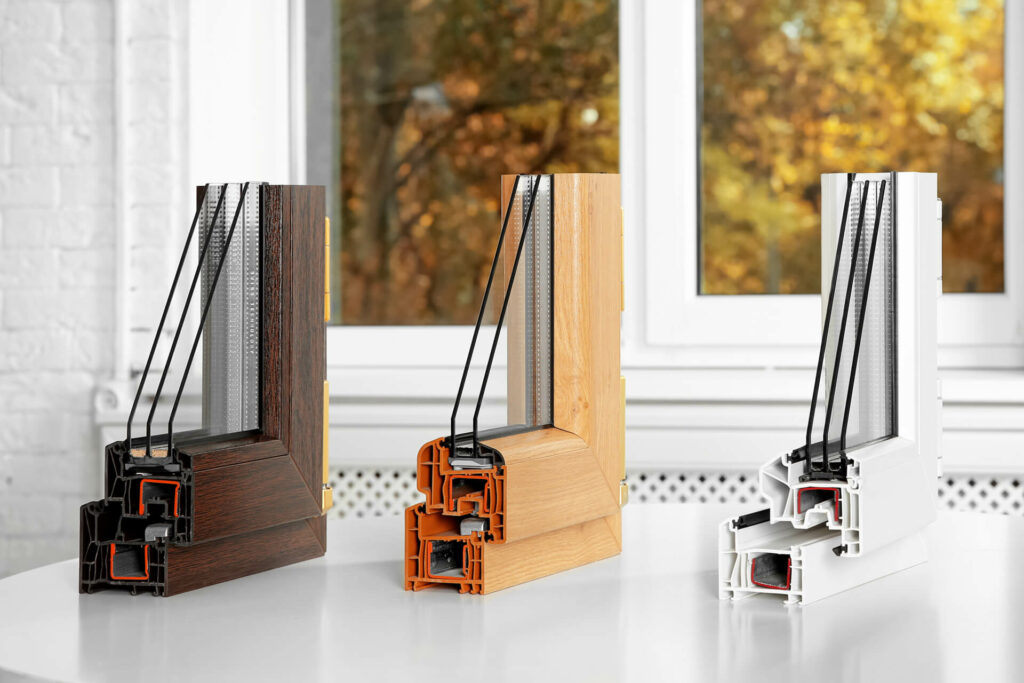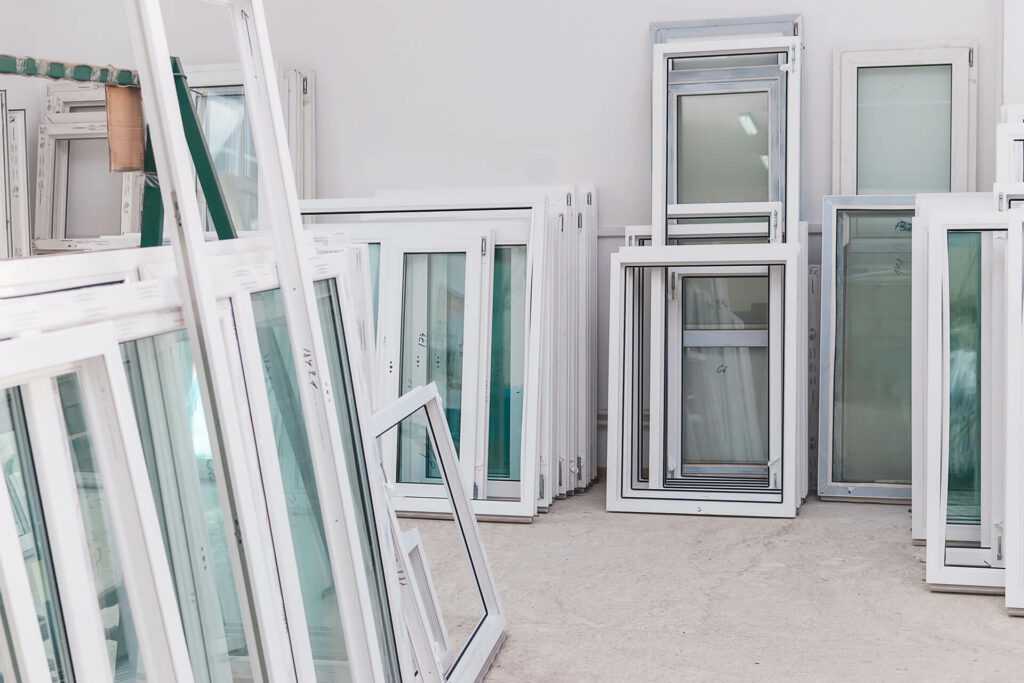Whether it’s your bedroom or bathroom windows, sidelites next to your front door, or street-facing living room glass, adding privacy doesn’t mean compromising on light or style. This guide explores a range of options, both temporary and permanent, so you can choose the right solution for your needs, budget, and lifestyle.
Window Films
Best for: Bathrooms, sidelites, kitchens, rentals.
Window film is a simple, affordable way to add privacy to glass without replacing it. Frosted or etched-style films obscure the view while still allowing in natural light. Decorative options offer unique patterns, while one-way mirror film lets you see out during the day, but blocks others from seeing in.
- Pros: Affordable, renter-friendly, easy DIY install, preserves natural light.
- Cons: Can peel or bubble if poorly applied; not always pet-proof if applied to low windows.
Tip: Choose a high-quality static-cling film for easier application and less mess during removal.
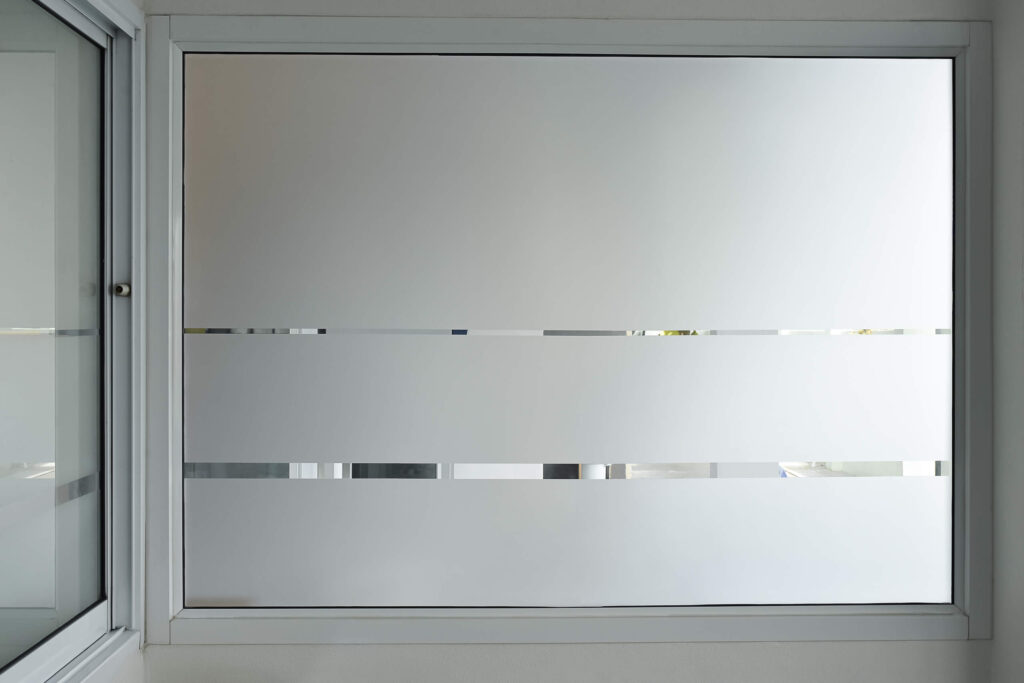
Window Coverings
Best for: Living rooms, bedrooms, entryways with sidelites.
Traditional window treatments offer privacy and aesthetic flexibility. From sheer café curtains to full blackout shades, there’s a covering for every style.
- Pros: Wide range of designs, easy to update, light control, insulating benefits.
- Cons: May block more light than desired; vulnerable to damage from pets, especially blinds and fabric curtains.
Sidelite Hack: Use tension rods or magnetic curtain rods to add fabric privacy without drilling into door frames.
Privacy Spray Paint
Best for: Bathrooms, sidelites, or garage windows.
Frosted glass spray such as Rust-Oleum creates a semi-permanent translucent finish that mimics etched glass. It’s sprayed directly onto the glass surface and can be stencilled for decorative patterns.
- Pros: Inexpensive, quick to apply, customizable designs.
- Cons: Less precise than film; permanent unless removed with a razor; not scratch-resistant, making it less ideal for homes with curious pets.
Note: Best applied indoors on clean, dry glass. Avoid areas reachable by pets if durability is a concern.
Textured or Patterned Glass Replacement
Best for: Renovations or long-term upgrades.
Replacing clear glass with privacy glass, such as frosted, reeded, rain, or glue-chip styles, offers a permanent and elegant solution.
- Pros: Zero maintenance, pet-proof, doesn’t fade or peel, adds resale value.
- Cons: Higher upfront cost, requires professional installation.
Why it stands out: Unlike coverings, privacy glass can’t be scratched, chewed, or tangled by pets, making it ideal for doors, sidelites, or bathrooms in pet-friendly homes.

Smart Glass and Switchable Film
Best for: Modern homes, smart upgrades, or privacy-on-demand spaces.
Smart glass or switchable film uses PDLC (Polymer Dispersed Liquid Crystal) technology to change from frosted to clear when powered on. The liquid crystals align to allow visibility when electricity flows, and scatter light when off for instant privacy.
- Pros: Instant privacy, sleek and modern, blocks up to 98% of UV rays.
- Cons: Expensive, requires a power source, may not suit every budget or aesthetic.
Note: Most retrofit kits are self-adhesive films applied to existing glass and powered via low-voltage wiring.
Creative DIY Privacy Ideas
Best for: Rentals, accent windows, or adding character without drilling or hardware.
Freestanding room divider screens can be positioned in front of windows to block sightlines without covering the glass. Great for sidelites or large living room windows where you’d rather not install hardware. Alternatively, placing tall indoor plants near windows can create a natural privacy screen that filters views and light while enhancing the room’s atmosphere.
- Pros: No installation needed, renter-friendly, adds personality to a space.
- Cons: Partial privacy only; may not suit all window sizes or layouts.
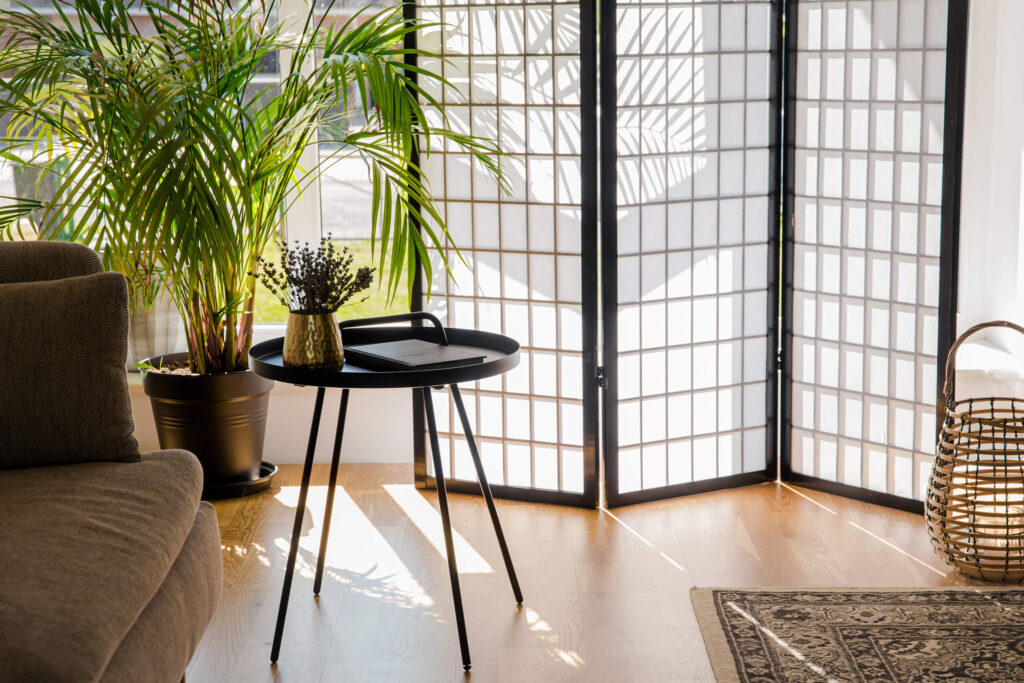
Choosing the Right Privacy Solution for Your Windows
The best privacy solution depends on how you live and what your space needs. If you have pets or small children, consider built-in privacy glass or durable films that can withstand everyday wear better than fabric curtains or blinds. In moisture-prone areas like bathrooms or kitchens, choose materials that resist humidity and won’t warp or mildew over time. And when it comes to light, think about whether you want a complete blackout, a soft filtered glow, or the flexibility to adjust throughout the day. With the right approach or a thoughtful combination, you can enjoy both privacy and natural light without sacrificing style, comfort, or peace of mind.

